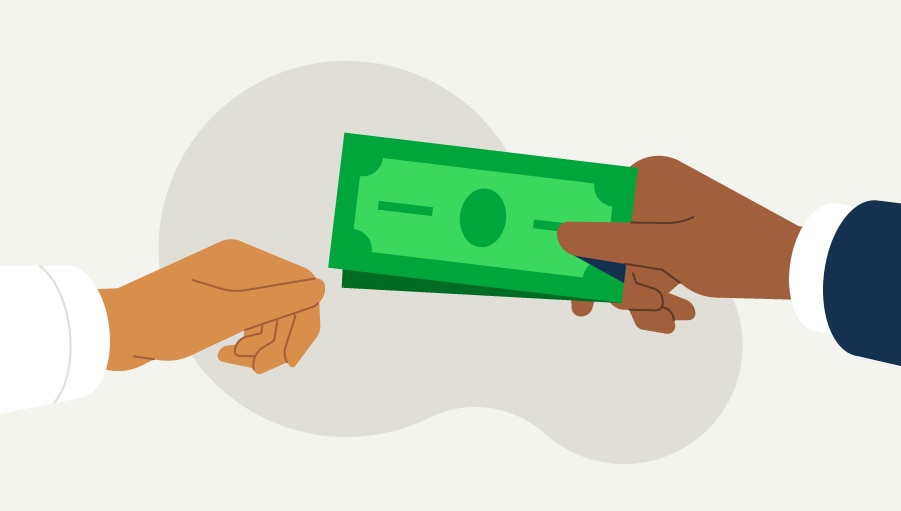Everyone expects to be paid fairly for their work, and your employees are no exception.
Whether due to accounting errors or an unpaid bonus, back pay is the money an employer owes to an unpaid employee.
In addition to frustrating employees, back pay can land employers in hot water if they don't take care of it correctly.
So how exactly does back pay work, and how is it recovered and paid for? Follow this comprehensive guide to learn everything you need to know about back pay.
How does back pay work?
Essentially, back pay, also known as back wages, is the term for wages that an employer owes to an employee for work done in the past. Yet, the employer withheld these wages from the employee’s paycheck for whatever reason.
If an employer withholds your pay intentionally or unintentionally, you may be entitled to back payments. This means that you’ll compel the employer to pay you the wages they owe you. If you have a valid claim to back pay, the employer will have to pay you the wages you’re entitled to.
Wage violations and back pay issues fall under the jurisdiction of the U.S. Department of Labor. The Department of Labor is the governmental agency ultimately responsible for ensuring employers treat employees fairly.
Additionally, the Fair Labor Standards Act (FLSA) is a law designed to protect workers, and the Department of Labor enforces it. Among other things, the FLSA establishes the federal government’s minimum wage, overtime laws, and recordkeeping standards for businesses.
Employees can sue small and large companies alike for back pay. Additionally, back pay doesn’t just apply to certain classifications of employees. Employed individuals, including hourly workers, salaried employees, freelancers, or contractors may be entitled to back pay.
Reasons an employer might owe back pay
There are many reasons an employer might owe back pay to an employee. In some cases, wage violations are honest mistakes resulting from a misclassification or accounting error. In other cases, employers may try to exploit their employees through dishonest employment practices, such as ignoring state minimum wage laws.
Common reasons for back pay include:
- Minimum wage violations
- Unpaid overtime
- Wrongful termination
- Unpaid bonuses or commissions
- Wage or tip theft
- Worker misclassification
- Accounting errors
- Payroll fraud
Whether back payment is a result of accidental or intentional causes, employees may still be subject to receive payment. To help reduce the risk of back pay due to accounting errors, consider using accounting software. Now that you know the reasons for back pay, let’s take a look at how to recover back pay.
How is back pay recovered?
If an employer doesn’t fix the payment error after discovering it, they may be in violation of the FLSA, in which case the employee can take action to recover their owed wages.
There are several ways to collect back pay, including:
- Bringing the issue up with human resources at your company to try to resolve it internally.
- Contacting the Wage and Hour Division of the Department of Labor, which can assess your eligibility for back pay and supervise payment.
- The Secretary of Labor can file a lawsuit on your behalf or obtain an injunction to prevent any employer from violating the FLSA.
- Contacting an attorney and filing a private lawsuit against your employer.
To find any owed back pay, visit the Department of Labor’s Workers Owed Wages website. There, you can search through a vast database to find out if you’re due any back pay.
If you are owed back payment, it’s best to act relatively quickly. The statute of limitations for claiming back pay is two years for unintentional violations and three years for intentional underpayment.
How do employers issue back pay?
The process for awarding back pay to employees isn’t much different from the standard payroll process.
To pay an employee back pay, you can follow these steps:
- Add the back pay amount to the employee’s next paycheck or create a separate one-time payroll.
- Deduct applicable taxes, Social Security, Medicare, etc. from back pay wages.
- Create accounting records for wages paid.
Remember that back pay is subject to the tax year in which you receive it. Don’t make the mistake of classifying these wages under the year when you should have received them.
Next steps for streamlining your payroll process
If you’re a small business owner, you may operate on thin margins. Therefore, the last thing you want is to deal with an unexpected expense like back pay. On top of that, you don’t want to underpay your employees in the first place. To help avoid the problem of back pay, consider using payroll software to cut down on human error and save time.











